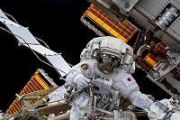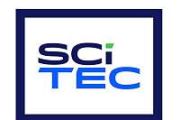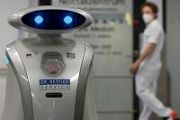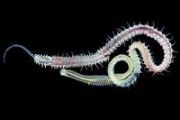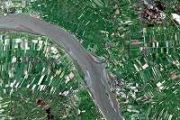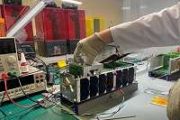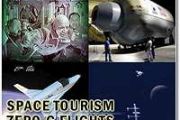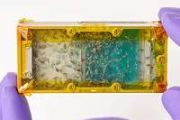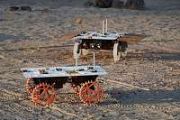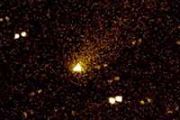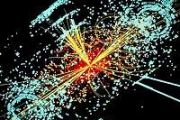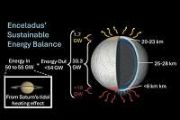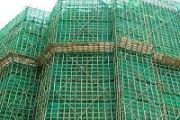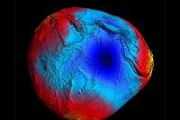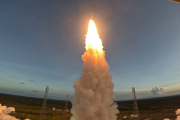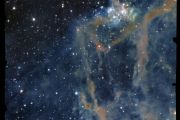
Copernical Team
False GPS signal surge makes life hard for pilots
 False GPS signals that deceive on-board plane systems and complicate the work of airline pilots are surging near conflict zones, industry employees and officials told AFP.
A ground collision alert sounds in the cockpit, for instance, even though the plane is flying at high altitude - a phenomenon affecting several regions and apparently of military origin.
This includes the vicinity of
False GPS signals that deceive on-board plane systems and complicate the work of airline pilots are surging near conflict zones, industry employees and officials told AFP.
A ground collision alert sounds in the cockpit, for instance, even though the plane is flying at high altitude - a phenomenon affecting several regions and apparently of military origin.
This includes the vicinity of Researchers Reveal Anomalous Heating in the Sun's Upper Atmosphere
 In a study published in The Astrophysical Journal, researchers from the Yunnan Observatories of the Chinese Academy of Sciences depicted a complete physical image of the anomalous heating in the upper atmosphere of the Sun - the solar corona and the solar chromosphere.
The enigma of the corona's anomalous heating stands as one of the eight challenges in modern astronomy. Similarly, the ano
In a study published in The Astrophysical Journal, researchers from the Yunnan Observatories of the Chinese Academy of Sciences depicted a complete physical image of the anomalous heating in the upper atmosphere of the Sun - the solar corona and the solar chromosphere.
The enigma of the corona's anomalous heating stands as one of the eight challenges in modern astronomy. Similarly, the ano Interstellar signal linked to aliens was actually just a truck
 Sound waves thought to be from a 2014 meteor fireball north of Papua New Guinea were almost certainly vibrations from a truck rumbling along a nearby road, new Johns Hopkins University-led research shows. The findings raise doubts that materials pulled last year from the ocean are alien materials from that meteor, as was widely reported.
"The signal changed directions over time, exactly ma
Sound waves thought to be from a 2014 meteor fireball north of Papua New Guinea were almost certainly vibrations from a truck rumbling along a nearby road, new Johns Hopkins University-led research shows. The findings raise doubts that materials pulled last year from the ocean are alien materials from that meteor, as was widely reported.
"The signal changed directions over time, exactly ma Chinese lunar lander and new crew spaceship names revealed
 China unveiled on Saturday the names of its manned lunar lander and new crew spaceship.
According to a news release from the China Manned Space Agency, the lunar lander that will carry Chinese astronauts to the moon's surface is named Lanyue, or Embracing the Moon, which first appeared in a poem written by the late Chairman Mao Zedong in 1965.
The word "Lanyue" symbolizes the Chinese
China unveiled on Saturday the names of its manned lunar lander and new crew spaceship.
According to a news release from the China Manned Space Agency, the lunar lander that will carry Chinese astronauts to the moon's surface is named Lanyue, or Embracing the Moon, which first appeared in a poem written by the late Chairman Mao Zedong in 1965.
The word "Lanyue" symbolizes the Chinese How NASA Uses Simple Technology to Track Lunar Missions
NASA Helps Emerging Space Companies 'Take the Heat'
 Things are heating up in the atmosphere, and NASA is helping space start-ups stay cool.
NASA has decades of expertise in creating technology that protects spacecraft from the intense heat generated when entering an atmosphere. As emerging companies develop innovative ways to do business in space, they know where to turn - and the agency is responding by offering its know-how and the advanc
Things are heating up in the atmosphere, and NASA is helping space start-ups stay cool.
NASA has decades of expertise in creating technology that protects spacecraft from the intense heat generated when entering an atmosphere. As emerging companies develop innovative ways to do business in space, they know where to turn - and the agency is responding by offering its know-how and the advanc The Iconic Photos from STS-41B: Documenting the First Untethered Spacewalk
 As astronaut Bruce McCandless II flew the Manned Maneuvering Unit (MMU) out of the space shuttle Challenger's payload bay for the first time on February 7, 1984, many in the agency were fearful about the use of a self-propelled and untethered backpack in space. Previous spacewalkers remained connected to the vehicle with tethers. This jet-pack allowed crews to move outside of the cargo bay and p
As astronaut Bruce McCandless II flew the Manned Maneuvering Unit (MMU) out of the space shuttle Challenger's payload bay for the first time on February 7, 1984, many in the agency were fearful about the use of a self-propelled and untethered backpack in space. Previous spacewalkers remained connected to the vehicle with tethers. This jet-pack allowed crews to move outside of the cargo bay and p NASA, RIT develop solutions for long-lasting spacecraft in harsh missions
 RIT's Center for Detectors has been chosen by NASA for two research programs: Early Stage Innovations (ESI) and Strategic Astrophysics Technology (SAT), with the hope of helping future spacecraft find new discoveries in the vast universe.
Under the leadership of Center for Detectors Director Don Figer, the team will be advancing and characterizing single-photon sensing CMOS image sensors t
RIT's Center for Detectors has been chosen by NASA for two research programs: Early Stage Innovations (ESI) and Strategic Astrophysics Technology (SAT), with the hope of helping future spacecraft find new discoveries in the vast universe.
Under the leadership of Center for Detectors Director Don Figer, the team will be advancing and characterizing single-photon sensing CMOS image sensors t mu Space and OneWeb launch satellite internet for Southeast Asia's remote areas
 In a landmark initiative to bridge the digital divide in Southeast Asia, mu Space in partnership with OneWeb, is set to offer satellite internet services targeting the region's underserved communities. This collaboration heralds a new era of digital accessibility, aiming to overhaul traditional internet access paradigms.
The innovative mobility service stands out by enabling on-the-move hi
In a landmark initiative to bridge the digital divide in Southeast Asia, mu Space in partnership with OneWeb, is set to offer satellite internet services targeting the region's underserved communities. This collaboration heralds a new era of digital accessibility, aiming to overhaul traditional internet access paradigms.
The innovative mobility service stands out by enabling on-the-move hi Globalsat Group enhances IoT offerings with Myriota SatCom technology
 In a strategic move to bolster its IoT services, Globalsat Group, a leading provider of mobile and satellite services, has entered into a collaboration with Myriota, a trailblazer in satellite IoT communications. This partnership aims to deploy Myriota's global data messaging service, renowned for its efficiency in long-term asset tracking and telemetry across various sectors including agricultu
In a strategic move to bolster its IoT services, Globalsat Group, a leading provider of mobile and satellite services, has entered into a collaboration with Myriota, a trailblazer in satellite IoT communications. This partnership aims to deploy Myriota's global data messaging service, renowned for its efficiency in long-term asset tracking and telemetry across various sectors including agricultu 





